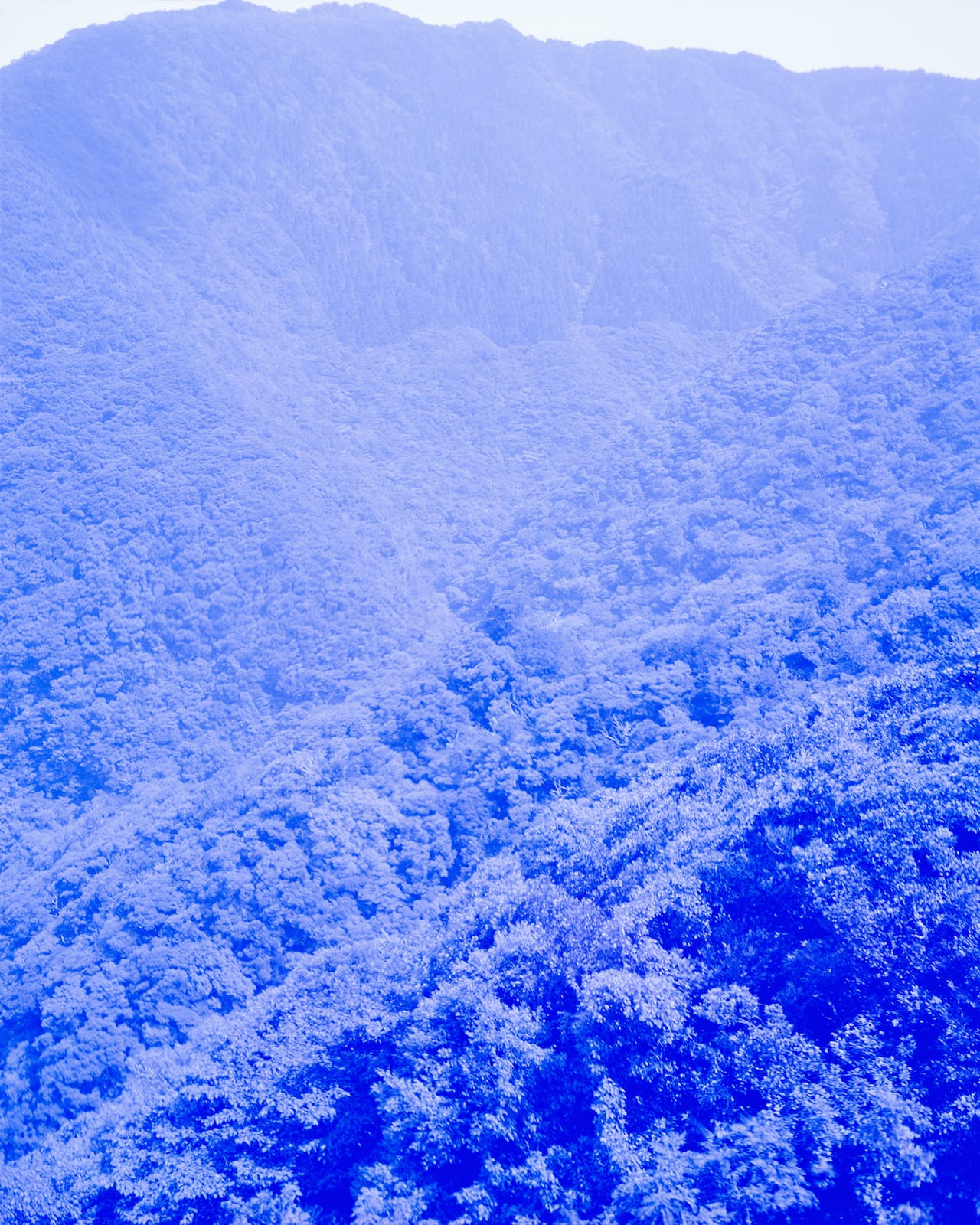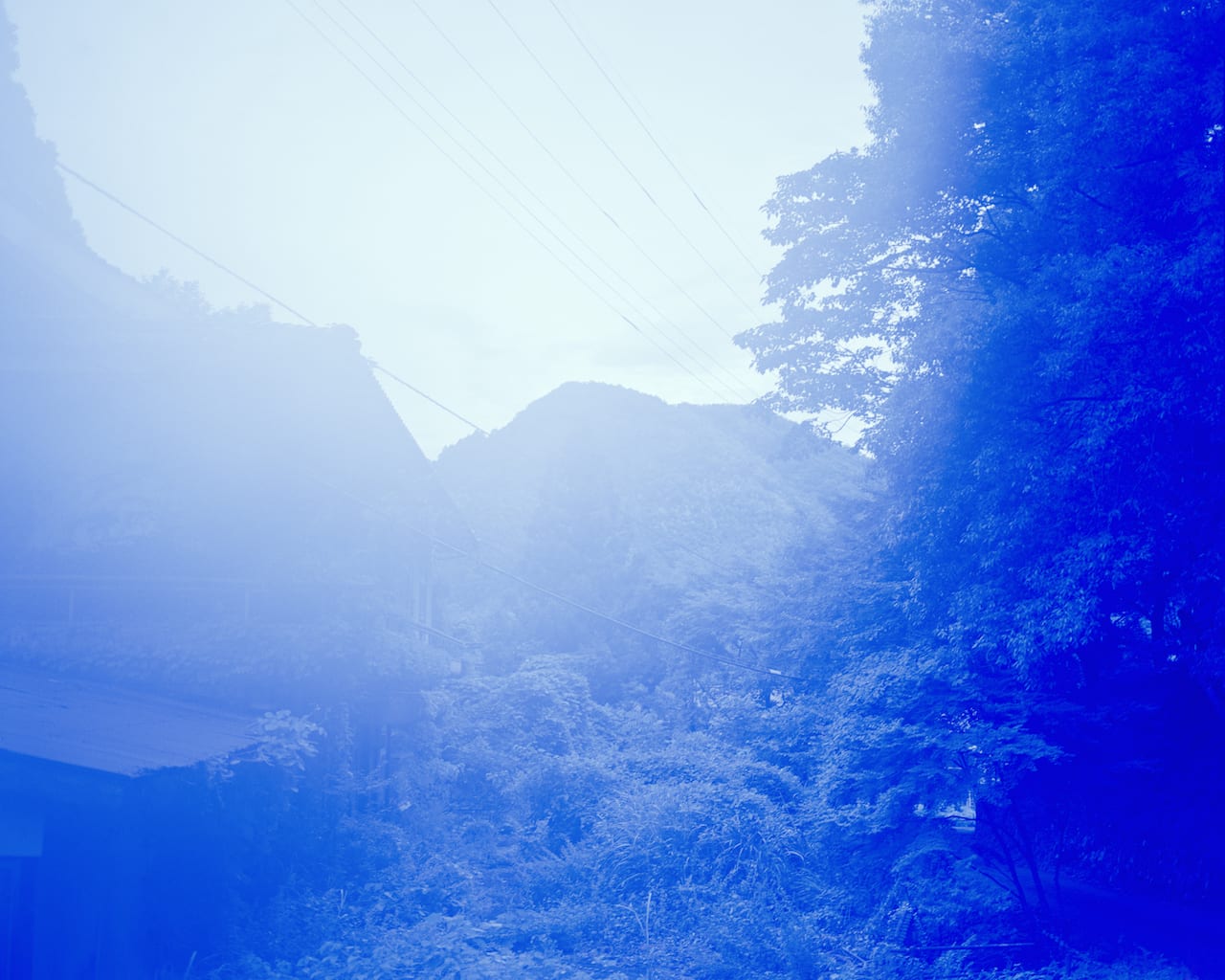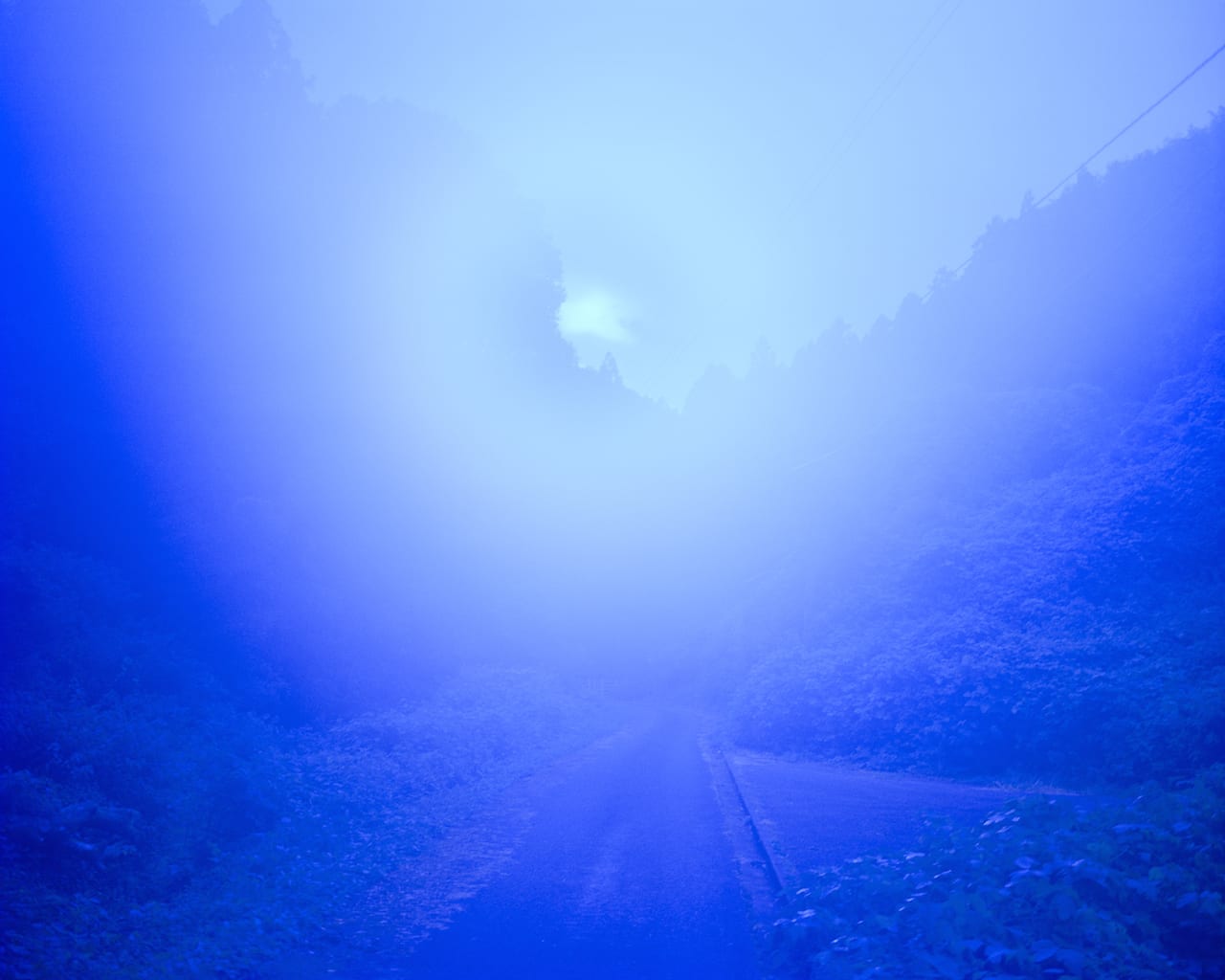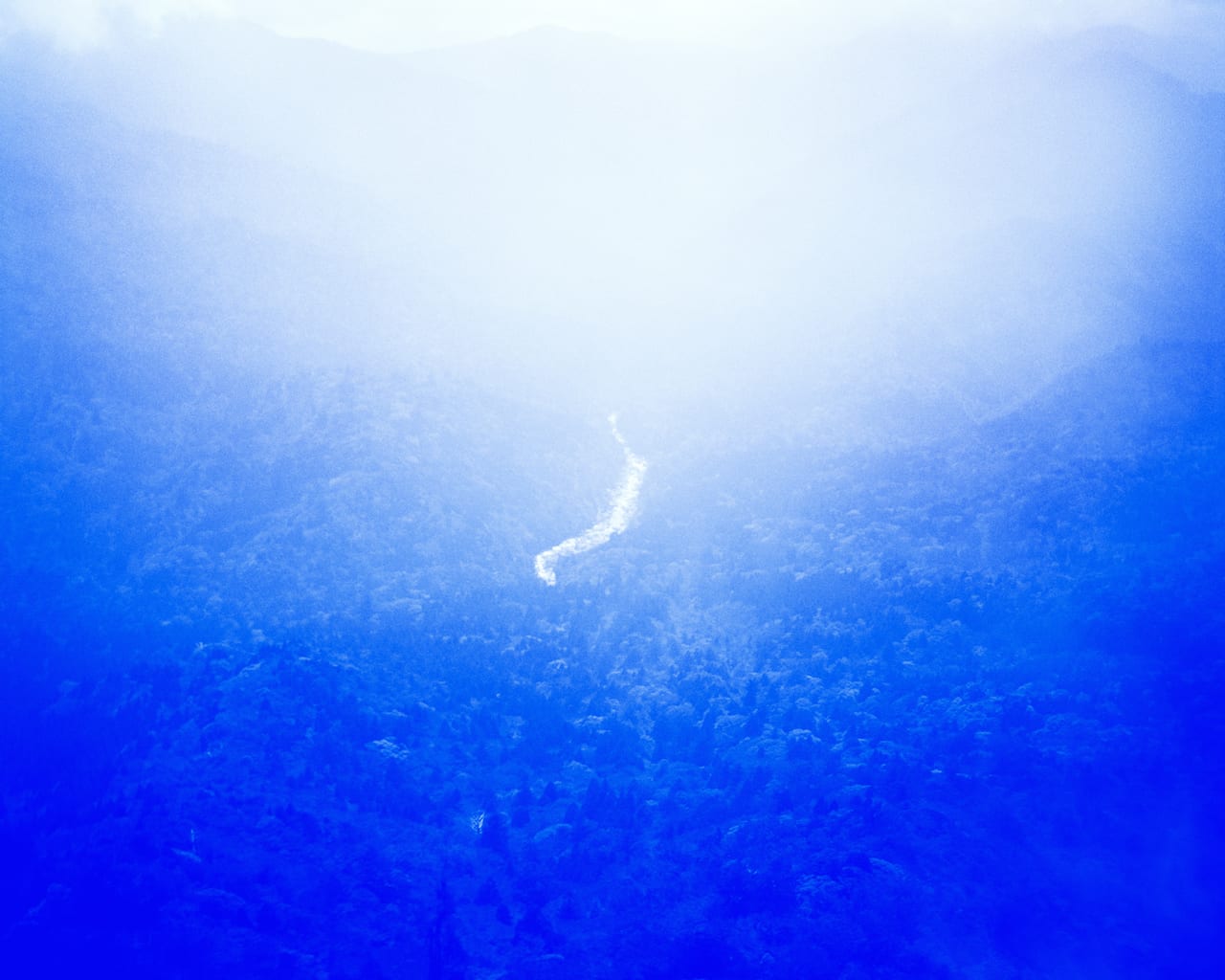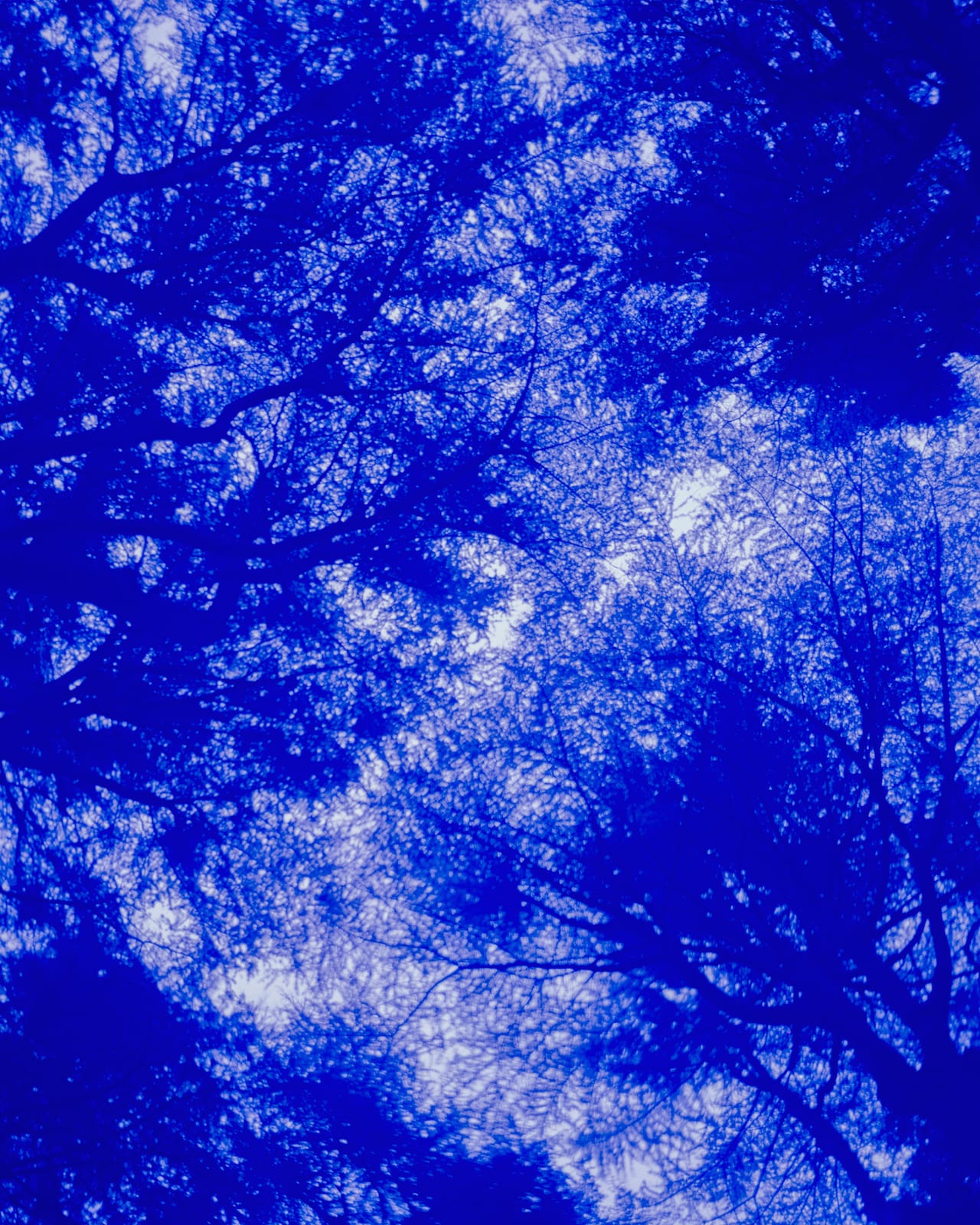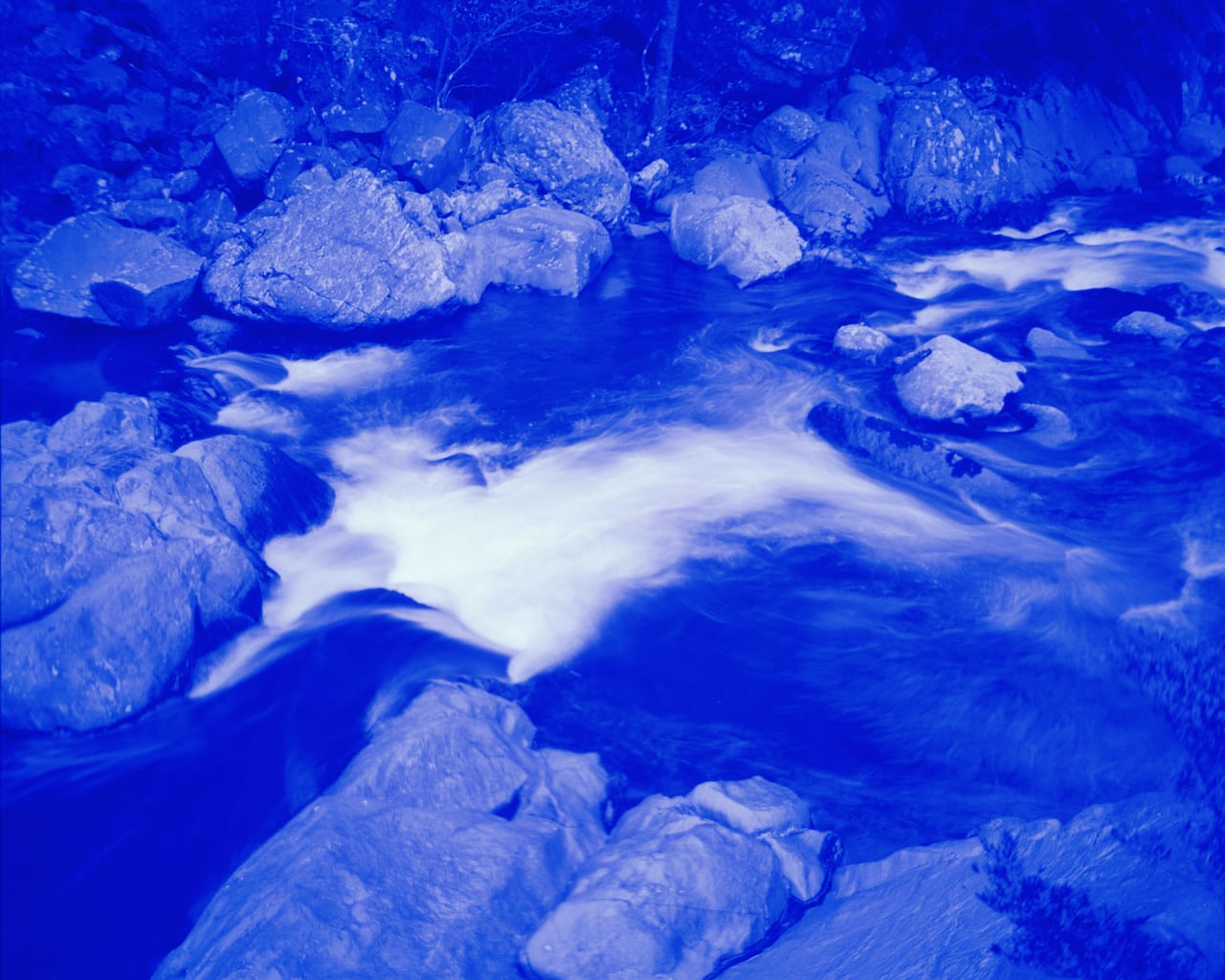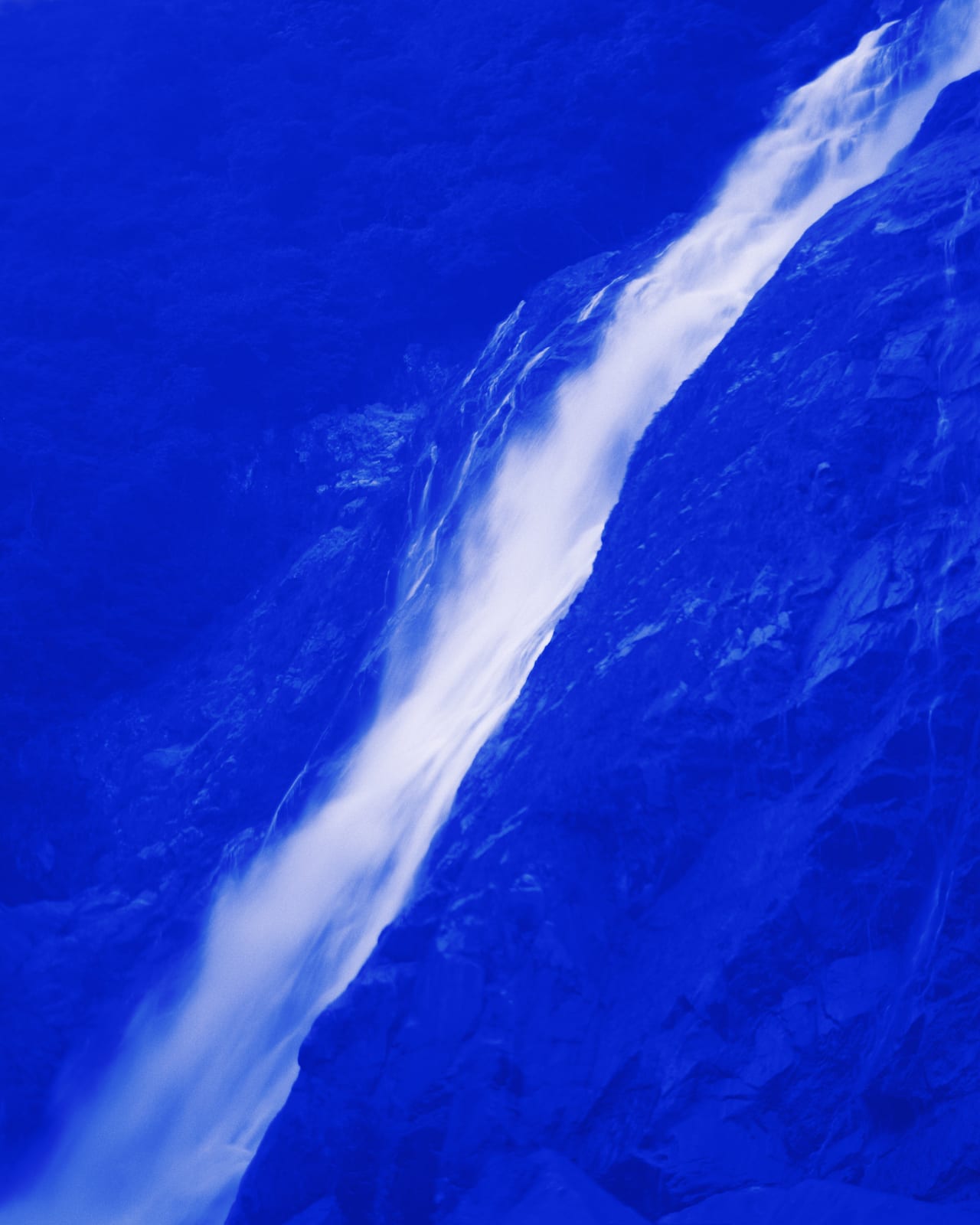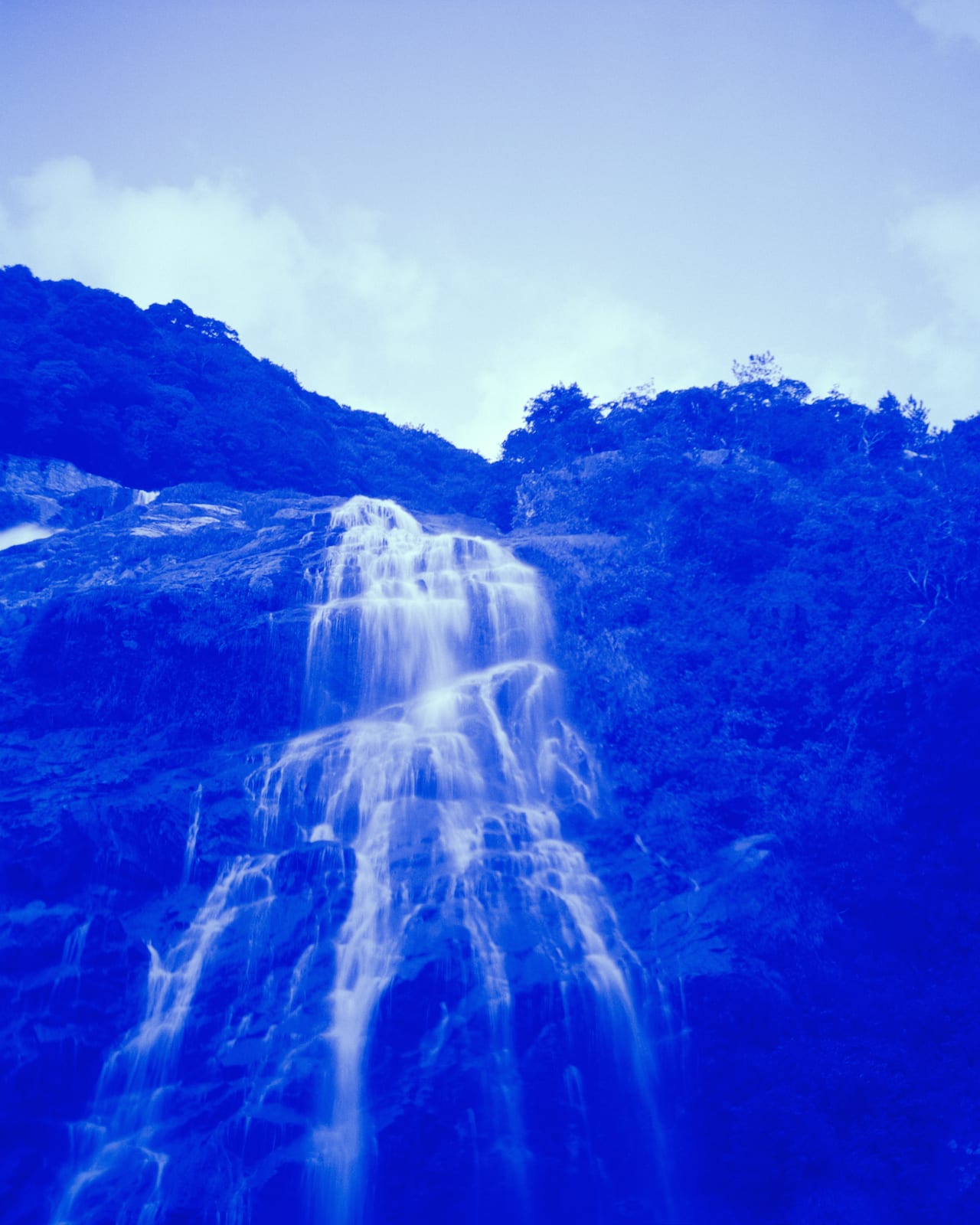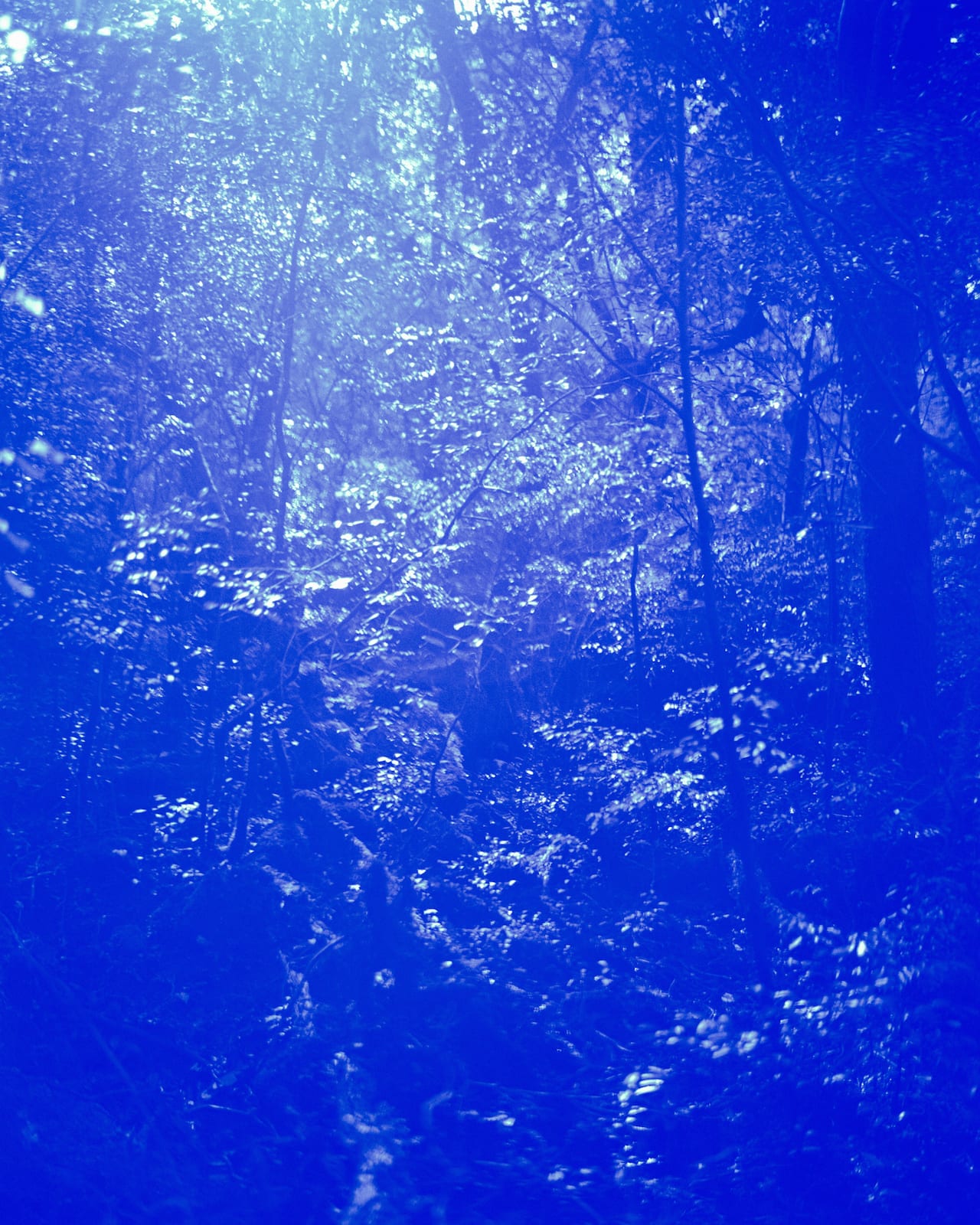“It is peculiar how forests have such an affect on us,” observes Jersey-born photographer Alexander Mourant of his latest project Aomori, which was shot in Japan’s ancestral forests. “As temporal dimensions crumble, objectivity leaves us. We are found in a still, oneiric state, contemplating our own accumulation of experience.”
“Aomori, meaning ‘blue forest’ in Japanese, is a synthesis of two existential ideas – the forest and the nature of blue,” explains Mourant. “Together they create a place of high intensity, a place which questions our relationship to time, colour and self.”
Mourant’s last project Aurelian used atmospheric conditions such as humidity, alongside tropical flora and fauna enclosed in artificial spaces, to create a metaphor for elsewhere – Aomori explores similar ideas, he says, but they are “more refined”. “In Aomori my interest was drawn, with an almost overpowering urge, towards the colour blue,” he explains.
Prior to his trip, Mourant immersed himself in the writings of Gaston Bachelard, Rebecca Solnit and philosopher Martin Heidegger, as well as the prolific Japanese author Haruki Murakami, “whose storylines fed perfectly into my own work.” He mentions John Gossage, Hokusai and Lothar Baumgarten as artistic influences, but says that his major inspiration was “the great Yves Klein”, and in particular his studies in blue.
“Aomori addresses the most intangible colour, blue,” Mourant says. “For an artist, an intimate investigation of one individual subject can lead to limitless fields on intertwining narratives and unseen connections. There is so much in the colour blue.”
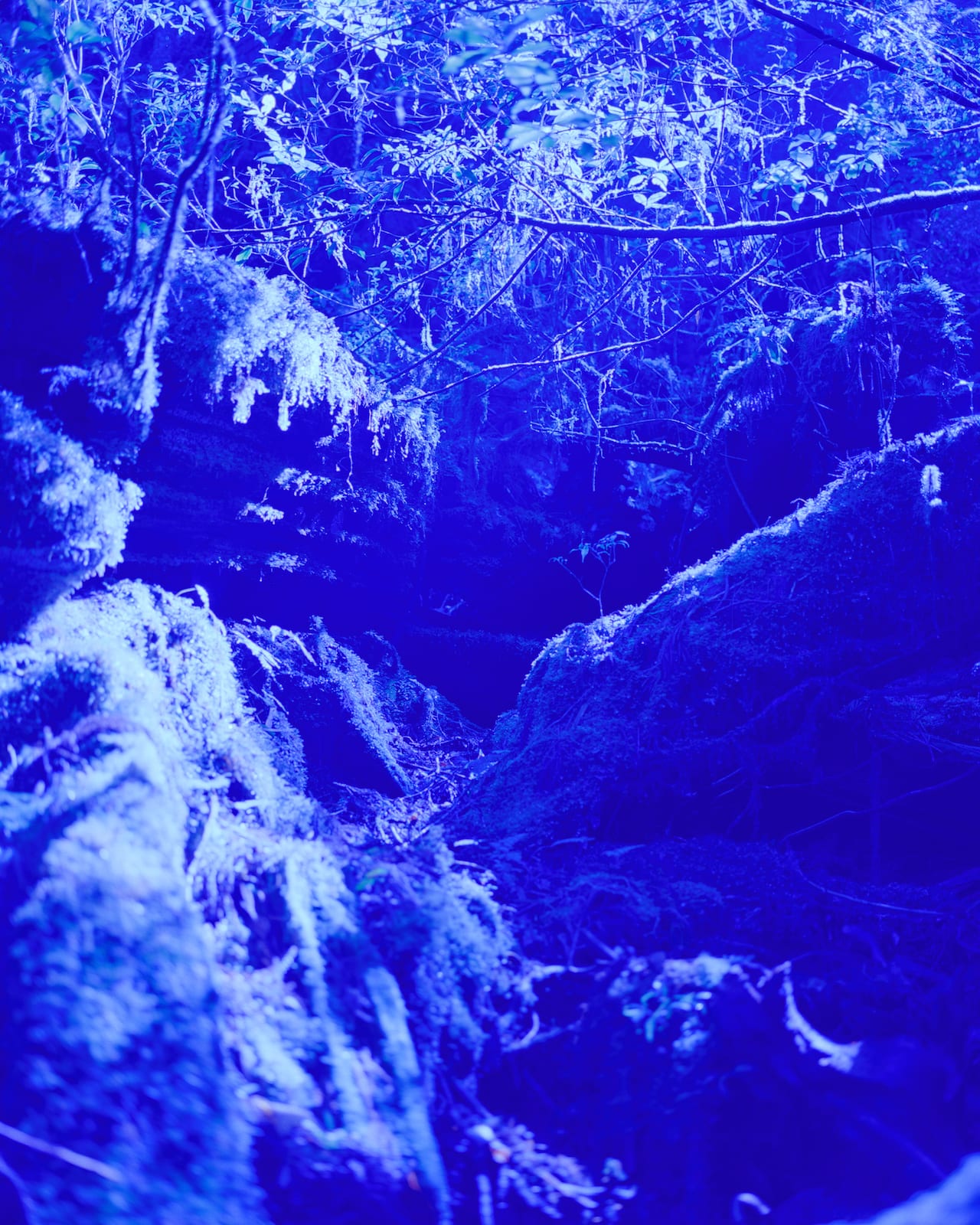
Taking coloured glass from a church window and getting it specially cut to fit his camera filter, Mourant photographed so that the images “are by process, forever blue”. “It was only later, when [curator and writer] Susan Bright commented on the religious symbolism of my work, saying: ‘the spiritual history of the process seeps through into the image, to a time when the land was a place of worship,’ did I realise the importance of using this process in Japan,” he says.
Mourant tested out his blue glass with a digital camera before travelling, but while this helped him gauge the exposure times he’d need to use it didn’t show him how the process would translate into film. “Also, whilst travelling, I was continually experiencing varying weather conditions, which resulted in inconsistent photographs,” he says. “As it turns out, shooting the world of blue is ironically more akin to shooting black-and-white. Bright sunlight is of utmost importance.”
Japan is notoriously humid during summer, which made for another challenge for the photographer over the two months he spent in the country. “Trekking up a forest path with a tripod and camera was not ideal in that climate, and this was strenuous and frustrating at times,” he admits. “But these were my desired conditions to make an atmospheric work.”
“The title Aomori came later, after the work was photographed,” he adds, “I don’t like to title a project during its creation. I feel it limits your imagination as you are continually aware that the images should be answering the text; they become defined by words. I discovered that the Japanese for blue was ‘Ao’ and the rest followed on.”
Aomori goes on show at the Free Range FR Awards The Old Truman Brewery from 01– 04 February 2018, alongside solo exhibitions by fellow winners Manny Melotra and Multiplicity – a collective made up of two artists, Jessica Thomas and Clive Kudakwashe Timothy https://www.free-range.org.uk/cgi-bin/news.pl?yearID=24&blogID=1106 https://www.alexandermourant.com/
AOMORI exhibition is supported by Free Range, Metro Imaging, ArtHouse Jersey and uses public funding by the National Lottery through Arts Council England.
